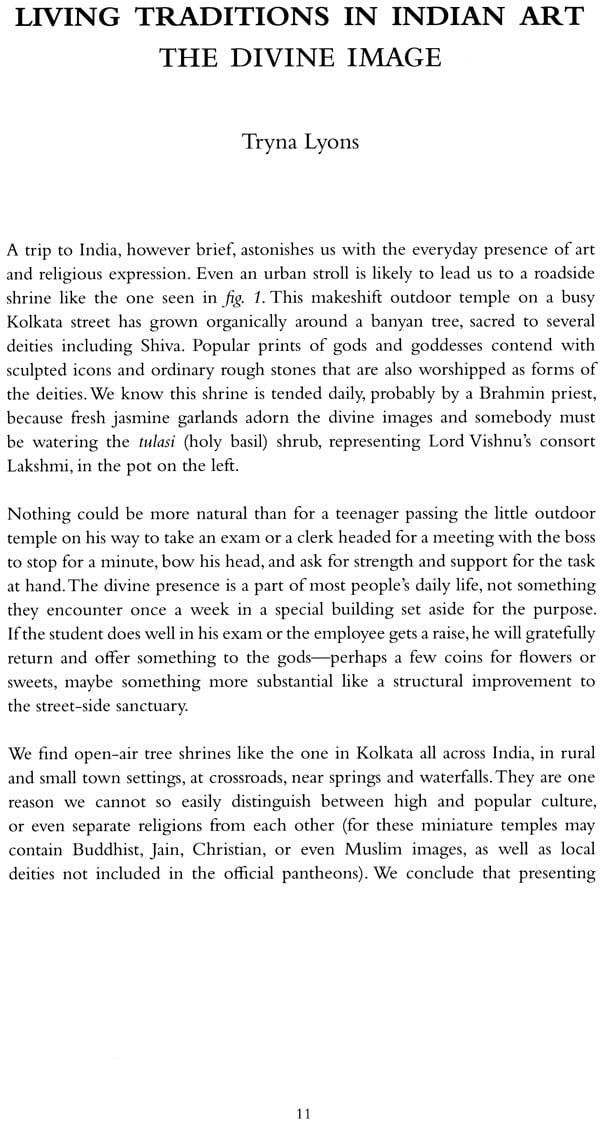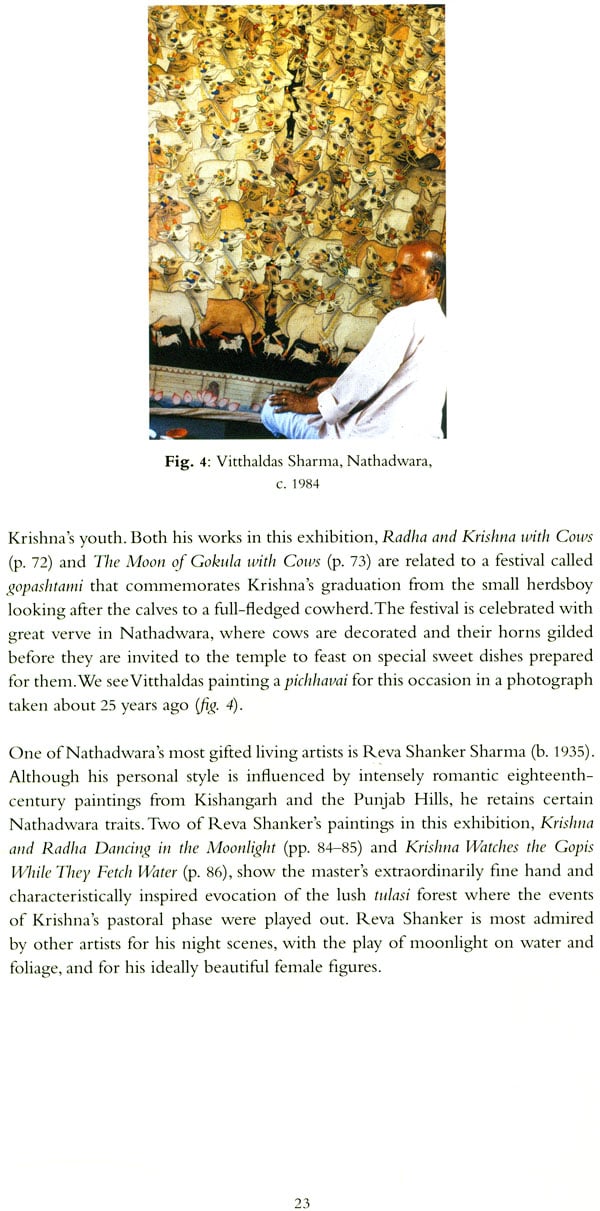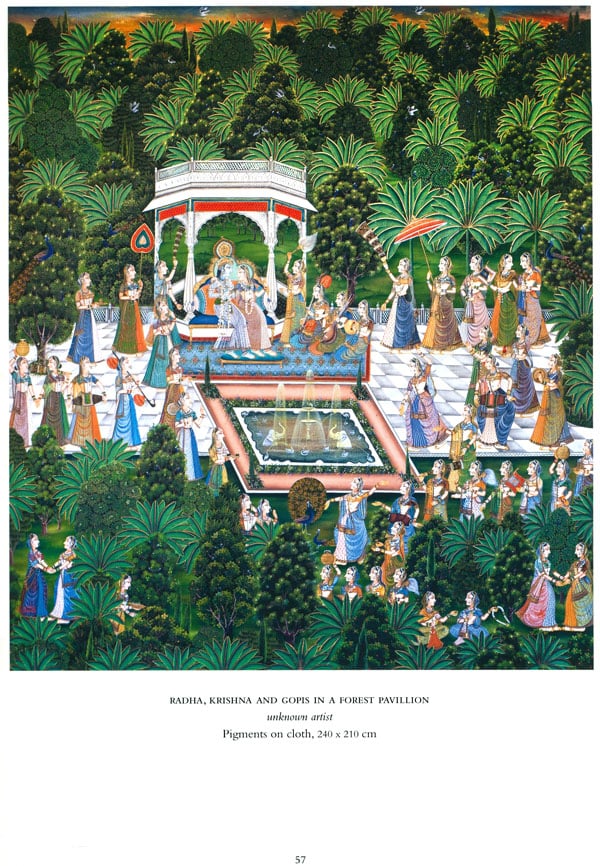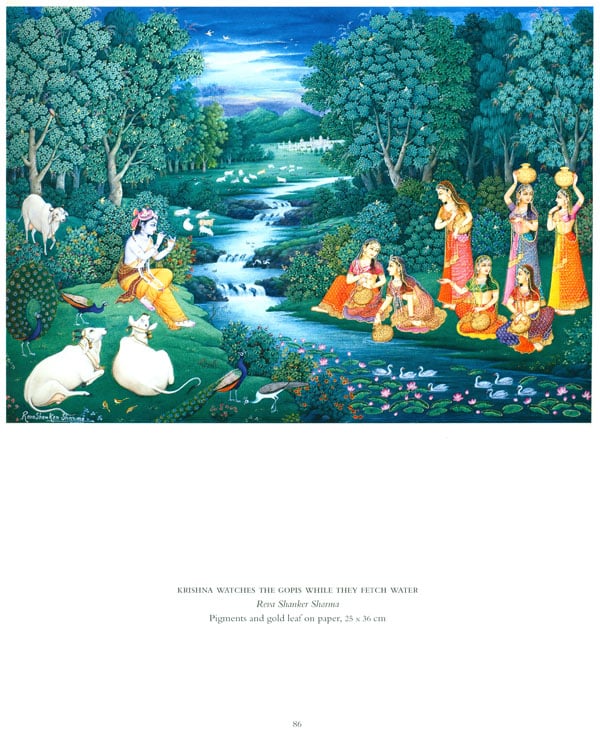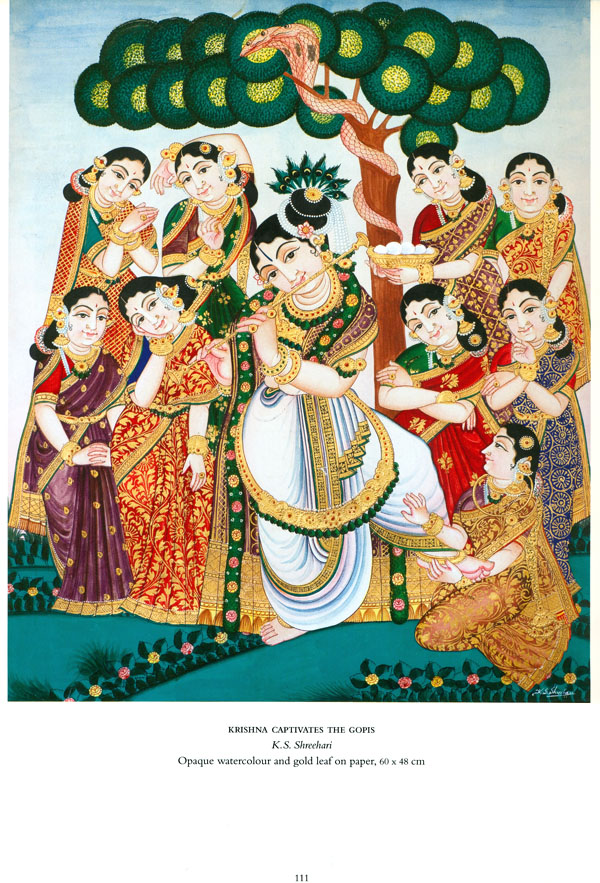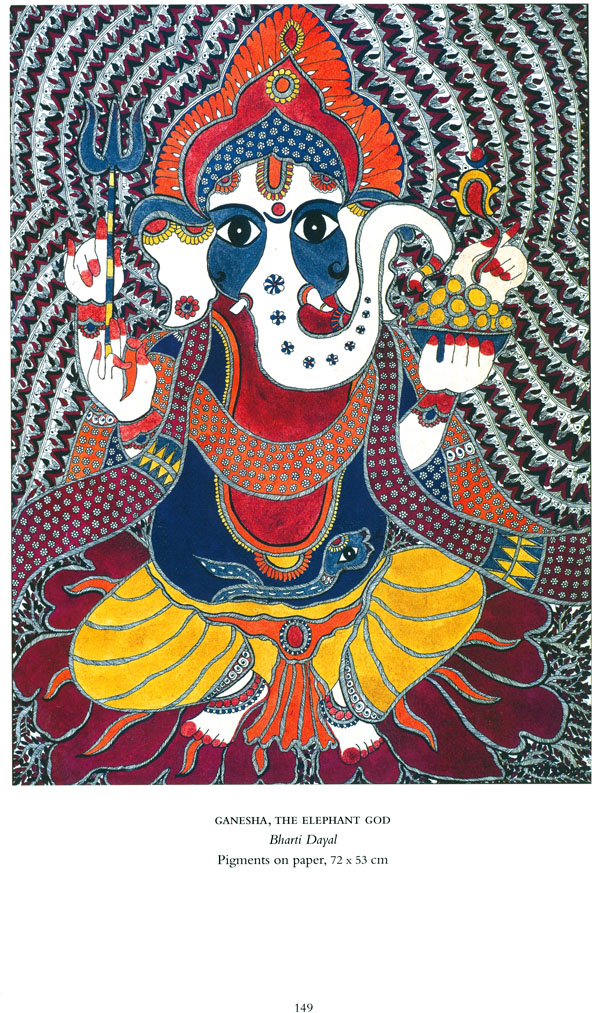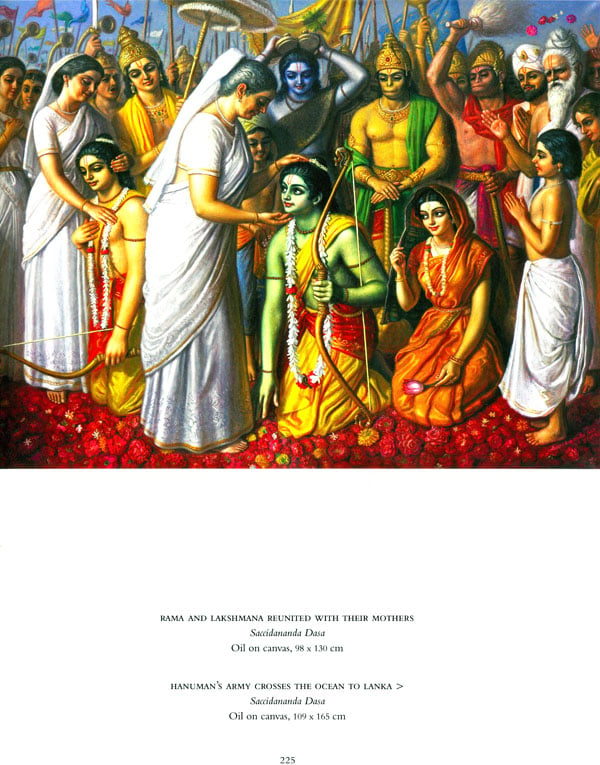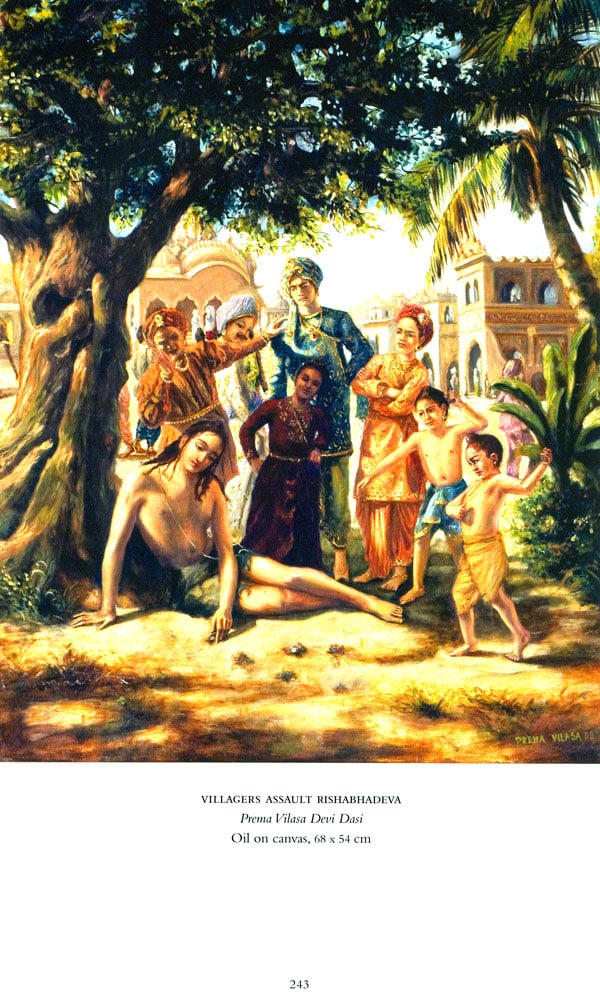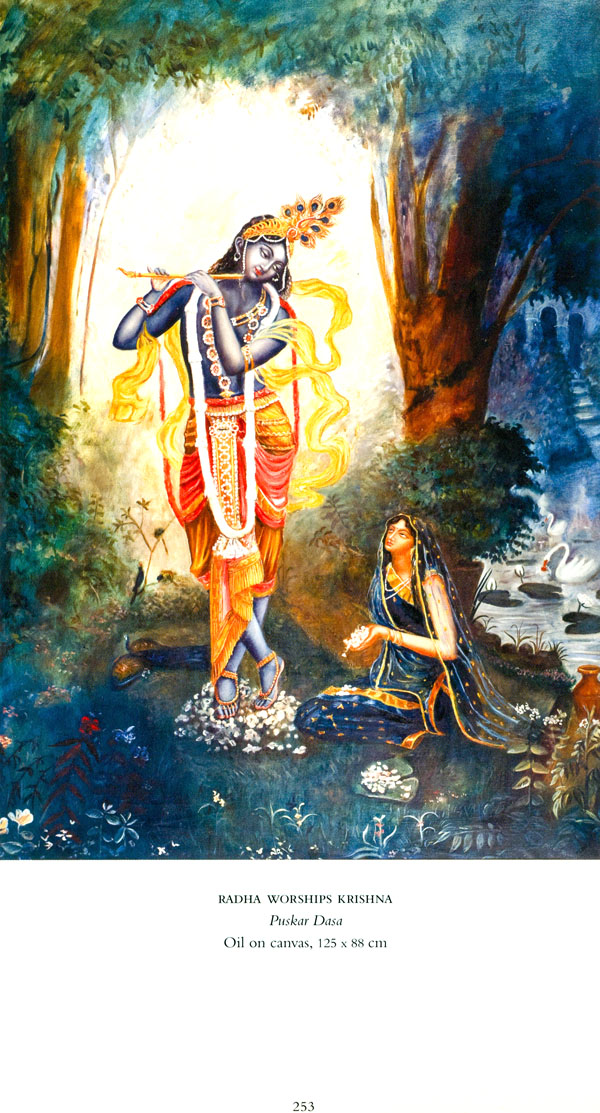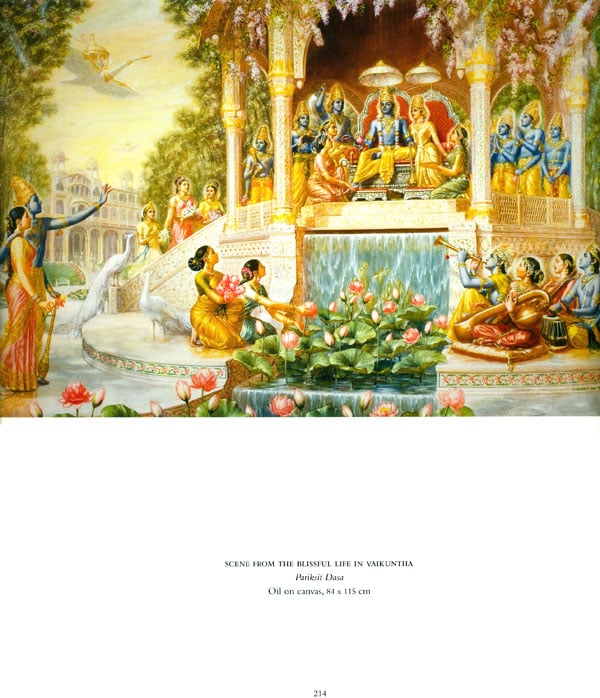
Living Traditions in Indian Art
Book Specification
| Item Code: | NAB863 |
| Author: | Martin Gurvich |
| Publisher: | Mapin Publishing Pvt. Ltd. |
| Language: | English |
| Edition: | 2010 |
| ISBN: | 9781935677017 |
| Pages: | 272 (Illustrated Throughout In Color) |
| Cover: | Hardcover |
| Other Details | 11.8 inch X 9.8 inch |
| Weight | 1.92 kg |
Book Description
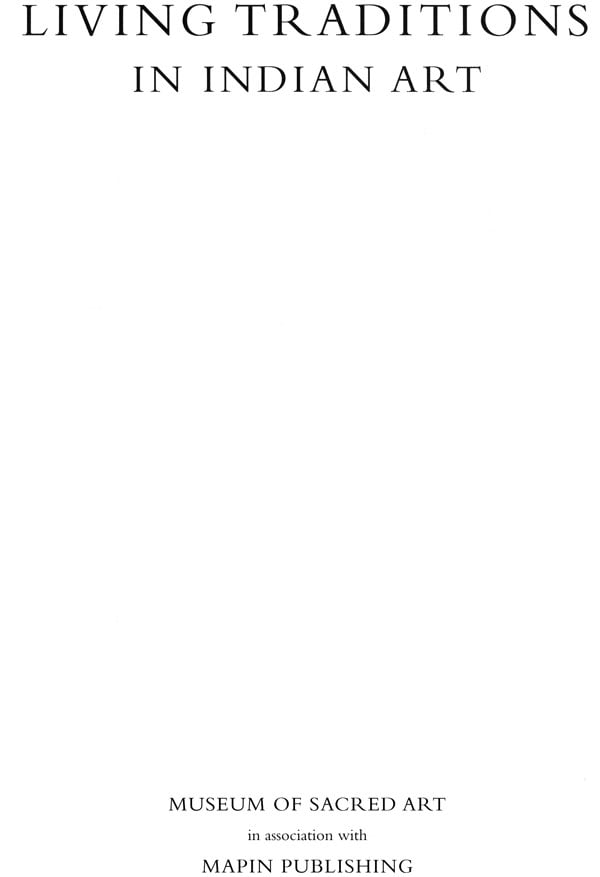
Devotional art has permeated everyday life in India for centuries. Contemporary artists continue to create visual representations of Hindu divinities in new and refreshing ways. This rich catalogue presents contemporary devotional art, exhibited in the museum of sacred Art in Belgium. A beautiful and one-of-its-kind collection, it includes modern paintings in traditional styles, metal icons, stone sculptures, ritual objects, masks and puppets. It also shows sacred art that has emerged from the Hare Krishna movement.
About the Authors
Martin Gurvich is the founder and director of Museum of Sacred Art. He is a member of the executive board of Radhadesh, the largest Hindu temple in Belgium, and is the general secretary of the Hindu Forum of Belgium and the Hindu Forum of Europe. He is a member of the executive board of United Religions Initiative Europe. He is also the president of Jose Gurvich Foundation, which manages a museum of the work of his father, the well-known artist, Jose Gurvich. Martin lives at Radhadesh with his family.
Tryna Lyons is a Seattle-based art historian with degrees from the University of California in Berkeley, and the American University of Paris. She has held research grants from the Fulbright Foundation and Guggenheim Foundation, and has taught at universities in the US and the Middle East. Her book on the Nathadwara painters of Rajasthan, The Artists of Nathadwara, was published in 2004 by Indiana University Press in association with Mapin Publishing.
India is a vast country: a subcontinent. India is also one of the ancient civilizations of the world. The antiquity of its civilization is matched by the vastness of its geographical extent. Both of these have contributed to the rich and multiple art forms of India.
This diversity is aptly illustrated by the artworks chosen for display in the collection of the Museum of Sacred Art. We know that stories associated with Shri Krishna arise, among other sources, from the Mahabharata, the Harivamsa, the Bhagavata Purana, and the Vishnu Purana. The narratives in each of these, place Lord Krishna in various perspectives: a God-child, a prankster, a model lover, a divine hero, and the Supreme Being. The Museum exhibits works of art with these themes, from Orissa, Tamil Nadu, Karnataka, Kerala, and Rajasthan as well as from Indonesia, Nepal, Tibet, and Thailand. Though these pieces are drawn nom different regions, and indeed from different countries, they have a strong commonality threading through their diversity The Mithila paintings from east India, the Tanjore paintings from the town of Thanjavur in Tamil Nadu, the pichhavais nom Rajasthan, the rod puppets from Indonesia, and the many other works in the museum capture the beauty and the philosophy of Shri Krishna’s timeless message of love and karma (duty) as embodied in the Bhagavad-Gita (“The Song Celestial”).
I am very happy to see that Radhadesh has established a collection at the Museum of Sacred Art to facilitate a glimpse into this sacred art influenced by Hinduism. It is hoped that visitors will come to the museum nom all over Europe and from various walks of life, and see the beautiful works on display here. This will give them an opportunity to appreciate these works of religious and sacred art, and to understand the plurality and diversity which have contributed to their beauty.
As an Indologist and museum curator, I am extremely glad that a museum dedicated to present—day spiritual art has been set up in Durbuy This catalogue gives a lovely overview of the collection in the Museum of Sacred Art.
India has a unique ancient tradition of depicting the divine, which has over the centuries produced an enormous amount of inspired art, with stylistic variations. Bulls, fertility—figurines, lingams, and yaksha (forest spirits) are early well—known expressions of the great forces of nature. In the classical period beautiful sculptures represented aspects of the universal soul in the shape of anthropomorphic deities. In medieval times miniature paintings reflected an invisible divine presence in another way. A rich tradition of tribal and folk art depict stories of heroes, gods, and demons. All these forms of Indian art are lively and colorful. They have been used for veneration of deities, and reflect great devotion. It is clear that Indian art has a divine abstract dimension as well as a direct human one.
India has greatly influenced my life—born to Belgian parents living in India, I grew up in Mumbai. I was raised with an open mind and an attitude of respect and tolerance for all religions. Back in Catholic Flanders the approach was somewhat different. The form in which spirituality pervaded the air in India, I discovered, was difficult to End here. But what struck me most was the lack of knowledge about one of the world’s most ancient and richest cultures. Thus I decided to study Indian languages, art and religion, and have been teaching and promoting it in Belgium.
Although museums collect, study, and exhibit ancient art, contemporary art is mostly exhibited only in galleries. Present—day traditional art rarely gets attention outside the country of its origin. But museums are in transition. As much as the objects, they also focus on visitors now. Visitors are not only charmed by the aesthetic value of a piece of art, but they also want to know more about the artist, and the objects utility and relevance.
Whilst working at Antwerp’s Ethnographic Museum, I realised that specialists appreciate the high quality of the Asian collection, but the general public are more attracted to ritual and devotional Art. Mythical stories like the Oceans Churning, Krishna and the Gopis, or Rama and Sita, while typically Hindu, are appealing to Westerners because of their wisdom and adventure.
The emotional dimension of religion—an important source for devotional artists—comes through in the themes of these stories: heroes and saints, the origin and the end of the world, good and evil. These fables are sometimes historical, sometimes doubtful but always sublimating worldly life.
The Vaishnava paintings, Indonesian puppets, and Tibetan ritual objects in the catalogue have been used to transmit important stories down the generations. Throughout the ages, thousands of artists have been inspired by the great Indian myths, but their identity is rarely known. Today when Indian art is travelling beyond the borders of India, museums have an important role in guarding these traditions and honouring the artists who should no longer remain anonymous. I sincerely hope that along with watching India’s economic expansion, people worldwide will also become more aware of its great traditions in art and culture. This museum and catalogue are undoubtedly valuable contributions in that view. May they inspire many others?
| Preface – J. Bhagwati | 1 | |
| Foreword – Christiane De Lauwer | 3 | |
| Connecting Humanity with the Divine – Martin Gurvich | 5 | |
| Living Traditions in Indian Art: The Divine Image – Tryna Lyons | 10 | |
| The Collection India | 34 | |
| Paintings | ||
| Orissa | 36 | |
| Tanjore (Tamil Nadu) | 44 | |
| Rajasthan | 52 | |
| Mysore (Karnataka) | 104 | |
| Kerala | 136 | |
| Mithila (Bihar) | 140 | |
| Sculptures | 172 | |
| Nepal and Tibet | 188 | |
| Indonesia – Bali and Java | 196 | |
| Thailand | 206 | |
| Art of Hare Krishna Movement | 208 | |
| Biographies of Artists | 260 | |
| Glossary | 268 | |
| Further Reading | 272 |
